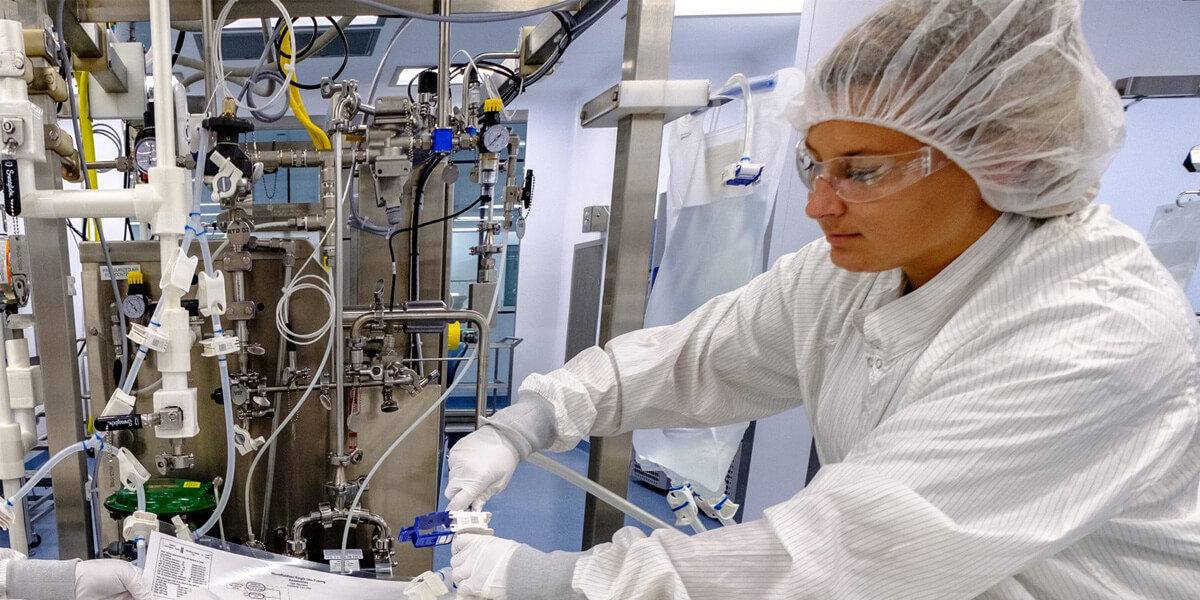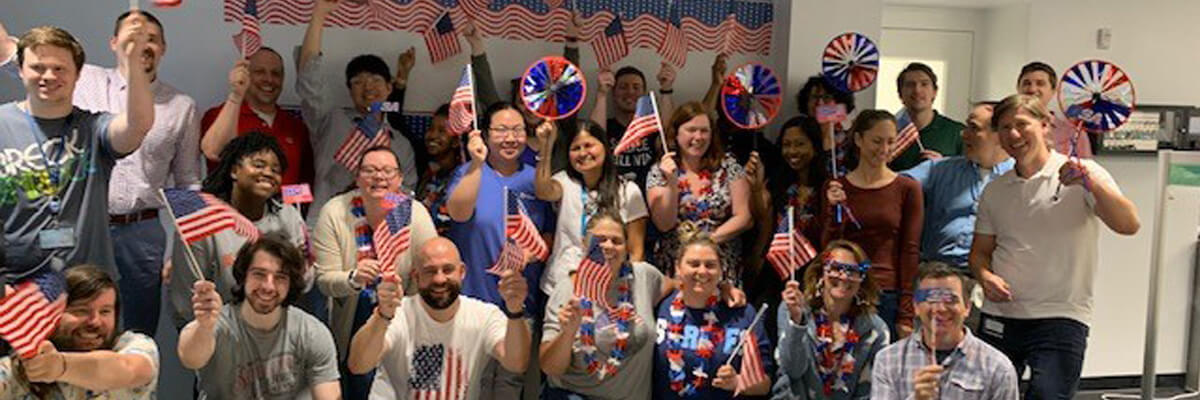- Science
- Clinical Trials
- Guide to Clinical Trials Your participation makes a difference
- Clinical Trials in Children Designed to improve kids' health
- Data and Results Sharing our Results
- Integrity and Transparency Building Trust
- Diversity Equity and Representation
- Plain Language Study Results Trial Result Summaries
- Expanded Access & Compassionate Use Possible Treatment Options
- Find a Trial
- Areas of Focus
- Rare Disease Smaller populations but big impact
- Internal Medicine Extending lifespans worldwide
- Inflammation & Immunology Treatment at the molecular level
- Vaccines Preventing the spread of infections
- Oncology The science of optimism
- Anti Infectives Combatting an evolving risk
- Areas of Innovation
- Gene Therapy Breakthroughs become treatments
- Medicinal Sciences The next generation of science
- Precision Medicine Developing tailored medicines
- Maternal Immunization Protecting newborns at the start
- mRNA Technology Unleashing the next wave of scientific innovations
- Diseases & Conditions
- Coronavirus Resources
- Product Pipeline
- Research Sites
- Clinical Trials
- Products
- How Drugs are Made
- Branded vs. Generic Learn the difference
- Biologics & Biosimilars Cures found in nature
- Commitment to Quality Maintaining the highest standards
- Global Supply Strategic manufacturing locations
- Manufacturing Sites Where medicine is made in the U.S.
- Medicine Safety
- Health Literacy Learning to be well
- Treatment Choices Learning about treatment decisions
- Partnering With Patients Helping others by reporting side effects
- Tips for Patients Preventing medication errors
- Reporting Adverse Events
- Counterfeiting Preventing medication errors
- Product Safety
- Product List
- Product Contacts
- PfizerPro for Professionals
- Patient Assistance Programs
- Distributors
- How Drugs are Made
- Stories
- Newsroom
- About
- People
- Executives Our senior-most leadership
- Board Members The people steering our company
- Scientists Our experts making discoveries
- Patient Stories Our patients
- Colleague Stories Our colleagues
- Responsibility
- Ethics & Compliance Each of us is responsible
- Responsible Business Breakthroughs that change patients’ lives
- Patient Advocacy & Engagement Putting Patients First
- Global Impact Meeting urgent needs worldwide
- Diversity, Equity, and Inclusion Everyone has something to offer
- Environmental Sustainability Our responsiblity to the environment
- Human Rights Furthering dignity and worth
- Health & Safety
- Intellectual Property The benefits of fair competition
- EHS Governance
- Misinformation
- Programs & Policies
- Grants Support for independent research
- Political Partnership Supporting like-minded organizations
- Working with Healthcare Professionals Collaboration to improve lives
- Prescription Value & Pricing How to lower patient costs
- Privacy Principles Commitment to personal data privacy
- Ready for Cures Improving Access to Medicines
- Transparency in Grants Committed to Disclosure
- Policy Positions
- Investors
- Investors Overview Information for stockholders
- Why Invest Why to join us in our mission
- Events & Presentations Calendar of upcoming events
- Financial Reports Quarterly reports and more
- Investor News Announcements about our performance
- Stock Information Charts and data
- Shareholder Services Information on stock transactions
- Corporate Governance
- Corporate Governance Overview Gaining insight into our performance
- Board Committees & Charters Defining the corporate structure
- The Pfizer Board Policies Ensuring ethical leadership
- Corporate Governance FAQs Learn more about our approach
- Contact Our Directors Email any of our Directors
- Purpose
- History
- Careers
- Partners
- People
The Original Lightspeed Project
As the industry continues to advance gene therapy, Pfizer has positioned itself to manufacture these medicines at a scale that has not yet been achieved. Terrari Howard, Megan Sharp, and Jeff Brown, who work in gene therapy manufacturing, seized the opportunity to be part of something at Pfizer that had never been done before and to grow and develop in different directions, all while working to advance breakthroughs that change patients’ lives.

Terrari started out in the medical device industry in a role that fueled his passion for science and hunger for learning. A microbiologist by training, his next move took him to the development lab at Sanford, then to an operational role, where he could connect what he had been doing in the lab with the other functions within Pfizer Global Supply (PGS).
Megan, on the other hand, joined Pfizer right after college as part of the Rotational Development Program (RDP) at the site in McPherson, Kansas. The RDP is a two-year, entry-level program that provides recent graduates with accelerated training through hands-on experience in all facets of PGS, from operations and engineering to supply chain and logistics.
As for Jeff, Director of Stage 1 Gene Therapy Operations, he started his career at Sanford as a student at North Carolina State University and still remains there two decades later.
Like many of their colleagues, they were drawn to gene therapy because of the potential impact it could have on patients’ lives.
“Being able to picture someone’s family benefiting from a gene therapy treatment is very rewarding,” says Megan, a Gene Therapy Supervisor.
For Jeff, the impact of his work hits close to home.

“My daughter was diagnosed with muscular dystrophy when she first entered elementary school. She’s now an emergency room nurse but has had to overcome a lot of physical challenges to realize her dream. She’s been a real inspiration for me by reminding me of the impact that our work will have on people with rare genetic diseases like hers.”
Jeff
Director of Stage 1 Gene Therapy Operations
Jeff and Terrari, an Integrated Manufacturing Excellence (IMEx) Deployment Lead, are working to get Pfizer’s first gene therapy, a treatment for Duchenne muscular dystrophy (DMD), to market, while Megan is leading a team working on a treatment for hemophilia B.
Working like a start-up within Pfizer
Years before Pfizer launched Project Lightspeed to combat the COVID-19 pandemic, we tried to accelerate the development and manufacturing process for gene therapy. Though it didn’t carry the “lightspeed” label, gene therapy was our prototype for getting new medicines to market more quickly, reducing timelines and keeping patients at the center of everything we do.
Jeff, who has worked in many different capacities at Sanford, was one of five colleagues tasked with building gene therapy operations in 2017, starting with Stage 1, which focuses on late stage clinical manufacturing. This team designed, built, and staffed the new facility and spearheaded the initial clinical manufacturing of gene therapy products for hemophilia B and DMD.
With an entrepreneurial mindset, the team worked like a startup within the walls of Pfizer, laying the groundwork not just for the clinical manufacturing of additional gene therapies, such as for hemophilia B, but also for Stage 2—led by David Posehn, Gene Therapy Stage 2 Operations Lead—which will handle the manufacturing of the commercial product.
Stage 1 was well underway in 2020, when the COVID-19 pandemic took hold. Pfizer realized we could take what the gene therapy team was doing and apply it to Project Lightspeed, our effort to accelerate the development and manufacturing of the Pfizer-BioNTech COVID-19 Vaccine.
Now, the lessons have come full circle. After successfully manufacturing and delivering the vaccine to billions of people globally, Pfizer is applying the innovative solutions leveraged for the COVID-19 vaccine and oral treatment back into our gene therapy operations.
“We are always identifying the mindsets and behaviors that we can apply to our operations and that help us provide products to patients more quickly and become more agile for more products coming into Sanford.”
Dave
Gene Therapy Stage 2 Operations Lead

Day to day
Working at lightspeed involves being courageous, devising unorthodox solutions, and making bold moves. It requires streamlining processes and making sure that team members from different parts of Pfizer—from the technicians on the manufacturing floor to chemists, engineers, and senior executives—are all on the same page.

To advance Pfizer’s gene therapies toward the market, the team at Sanford is doing all of this in a constantly changing environment where every day is different, bringing its own unique challenges.
“We hold a daily meeting at 7 a.m., where team members discuss what we’ve learned from the previous day, who will fulfill which roles, and anything that might hinder our ability to perform our work successfully,” Megan says. “And then we get to work.”
On the manufacturing floor, Megan’s team is all about continuous improvement. They are constantly communicating, checking in with each other throughout the day, and refining procedures.
Each day is different, and the team leverages valuable experiences on the manufacturing floor to implement robust improvements.
It’s not always easy, especially when things do not go as planned. One such instance was a setback that occurred with cell culture during an engineering run, a process development step that tests whether the manufacturing process for a particular medicine is scalable.
Terrari’s team noticed that the cells in a large bioreactor were not growing well—this was a critical issue as these cells are crucial in the manufacturing of viral vectors, which are used to carry gene therapies into the human body. Rather than terminating that batch, they investigated why the cells weren’t growing.
“We don’t just want to give up and start over without knowing what went wrong. We want to find the root cause of the problem,” Terrari says. “My role in that situation was to pull all of these scientists and engineers together, balance their different expertise and personalities, and drive them toward a solution in a collaborative environment.” Together, the team pinpointed the root cause, adding to their knowledge base, improving their manufacturing process, and embodying the “lightspeed” mentality.